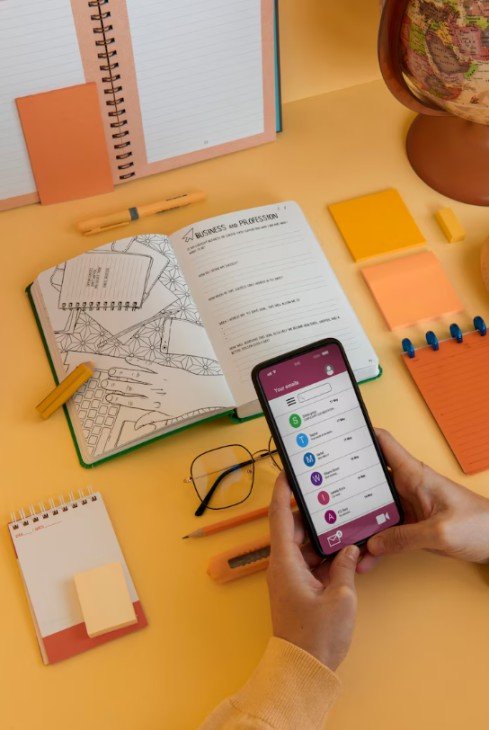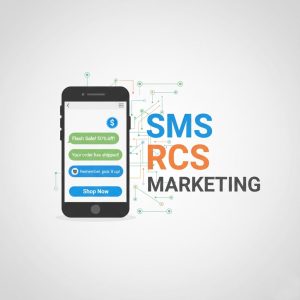Creating a Winning Mobile App Marketing Plan: A Complete Guide

Why Your Mobile App Needs a Strategic Marketing Plan
In today’s competitive app marketplace, having a brilliant mobile app isn’t enough—you need a strategic marketing plan to ensure its success. With over 2 million apps in the Apple App Store and 2.7 million on Google Play, standing out requires more than just development skills. It demands a comprehensive marketing strategy.
According to recent statistics, the average smartphone user has around 80 apps installed but regularly uses only about 9 of them daily. This highlights the immense challenge app developers and marketers face: not just getting users to download your app, but to actually use it consistently.
A well-crafted mobile app marketing strategy serves as your roadmap to success, guiding all your promotional efforts toward achieving clear business objectives. Without this plan, you risk wasting resources on ineffective tactics and missing valuable opportunities to connect with your target audience.
Understanding the Mobile App Marketplace in 2025
Before diving into the specifics of your marketing plan, it’s crucial to understand the current state of the mobile app industry. Mobile app revenue is projected to reach $935 billion by 2025, showing the massive economic potential of this space.
User behavior continues to evolve, with trends showing:
- Increased preference for personalized experiences
- Growing demand for privacy-focused applications
- Higher expectations for app performance and user interface
- Preference for apps that solve specific problems efficiently
The competitive landscape is also shifting, with larger tech companies dominating certain categories while independent developers find success in niche markets. Understanding where your app fits within this ecosystem is fundamental to developing an effective marketing strategy.
Step 1: Define Your App’s Unique Value Proposition
Every successful marketing plan begins with clarity about what makes your app different from thousands of others. Your Unique Value Proposition (UVP) articulates why users should choose your app over competitors.
To develop a compelling UVP:
- Identify the primary problem your app solves
- Articulate how your solution is different or better than existing options
- Consider the emotional benefits users gain, not just functional features
- Express your UVP in clear, jargon-free language that resonates with your target users
For example, rather than saying “a food delivery app with many restaurant options,” a stronger UVP might be “The only food delivery service that guarantees 30-minute delivery with real-time tracking and zero hidden fees.”
Your UVP should guide all marketing messages and be prominently featured in your App Store listing, website, and promotional materials.
Step 2: Conduct Comprehensive Market Research
Effective market research provides the foundation for your entire marketing strategy. This research should include:
Target Audience Analysis
Create detailed user personas based on:
- Demographics (age, location, income level, etc.)
- Psychographics (values, interests, lifestyle choices)
- Behavior patterns (when and how they use mobile apps)
- Pain points your app addresses
Understanding exactly who you’re marketing to allows you to craft messages that resonate deeply with potential users.
Competitor Analysis
Identify direct and indirect competitors by:
- Analyzing similar apps in your category
- Studying their marketing strategies and messaging
- Reading user reviews to identify their strengths and weaknesses
- Noting gaps in their offerings that your app could fill
As noted by Mobile App Daily, apps that conduct thorough competitor research see 60% higher conversion rates than those that don’t.
Step 3: Set SMART Marketing Objectives
Your marketing plan needs clear, measurable goals. Using the SMART framework (Specific, Measurable, Achievable, Relevant, Time-bound) ensures your objectives provide actionable direction.
Examples of SMART objectives for your app marketing plan might include:
- Achieve 10,000 downloads within the first 30 days of launch
- Reach a 30-day retention rate of 40% by the end of Q2
- Generate $25,000 in in-app purchases by the end of Q3
- Achieve an average user rating of 4.5 stars within six months
Each objective should align with your overall business goals and have specific key performance indicators (KPIs) to track progress.
Step 4: Optimize Your App Store Presence with ASO
App Store Optimization (ASO) is essentially SEO for your app listings. It helps your app rank higher in store search results and drive organic downloads.
Key elements of effective ASO include:
Keyword Research and Implementation
Research relevant keywords using tools like App Annie or Sensor Tower to identify terms your target audience is searching for. Incorporate these keywords naturally into your:
- App title
- Subtitle or short description
- Keyword field (Apple App Store)
- Long description
Visual Assets Optimization
Your app’s visual elements create the crucial first impression:
- Design an icon that stands out in search results
- Create screenshots that highlight key features and benefits
- Develop a video preview that demonstrates your app’s functionality
- Ensure all visual elements maintain consistent branding
According to our research at Mobile Dominate, apps with optimized visual assets see up to 35% higher conversion rates from page visits to downloads.
Step 5: Develop a Multi-Channel Marketing Strategy
Successful app marketing requires presence across multiple channels to reach potential users wherever they are. Your multi-channel strategy should include:
Content Marketing
Develop valuable content that addresses your target audience’s needs:
- Blog posts solving problems related to your app’s functionality
- How-to guides and tutorials
- Industry insights and trend analysis
- User success stories and case studies
Content marketing not only drives organic traffic but establishes your brand as an authority in your niche.
Social Media Marketing
Choose platforms where your target audience is most active and create platform-specific strategies:
- Instagram/TikTok: Short-form video demonstrations of your app
- Twitter: Industry insights and app updates
- Facebook: Community building and targeted advertising
- LinkedIn: B2B apps can focus on professional use cases and benefits
Email Marketing
Build an email list through pre-launch signups, content offers, and in-app prompts:
- Send a welcome series introducing app features
- Provide tips to maximize app value
- Share updates about new features
- Re-engage inactive users with special offers
Step 6: Implement Paid Acquisition Strategies
While organic methods form the foundation of your marketing, strategic paid advertising can accelerate growth:
App Install Campaigns
Most major ad platforms offer specialized app install campaigns:
- Google App Campaigns
- Apple Search Ads
- Facebook/Instagram App Install Ads
- TikTok App Install Ads
Optimize these campaigns by:
- Testing different creative assets
- Refining audience targeting
- Adjusting bids based on user quality and lifetime value
Influencer Partnerships
Collaborate with influencers whose audience aligns with your target users:
- Micro-influencers (10k-100k followers) often provide better engagement rates
- Create authentic demonstrations of your app’s value
- Develop trackable campaigns with unique download links
- Consider long-term partnerships rather than one-off promotions
Step 7: Focus on User Retention and Engagement
Acquiring users is only the beginning; keeping them engaged is crucial for long-term success. Your marketing plan should include:
Onboarding Optimization
Create a frictionless first-time user experience:
- Streamline the signup process
- Provide interactive tutorials highlighting key features
- Deliver immediate value in the first session
- Request permissions contextually when needed
Push Notification Strategy
Develop a strategic approach to push notifications:
- Segment users based on behavior and preferences
- Personalize message content
- Time notifications for maximum engagement
- Always provide clear value in each notification
Regular Updates and Improvements
Show users you’re committed to continuously improving their experience:
- Regularly add new features based on user feedback
- Fix bugs promptly
- Communicate updates clearly
- Thank users for their input
Step 8: Implement Analytics and Measure Performance
Data-driven decisions are essential for optimizing your marketing efforts. Set up comprehensive analytics to track:
- User acquisition sources
- User behavior flows within the app
- Retention metrics at key intervals (1-day, 7-day, 30-day)
- Conversion rates for in-app actions
- Revenue metrics and return on ad spend
Tools like Firebase, Mixpanel, or AppsFlyer can provide these insights, allowing you to double down on what’s working and adjust what isn’t.
Step 9: Budget Allocation and ROI Analysis
Allocate your marketing budget strategically across channels based on:
- Cost per acquisition
- Customer lifetime value
- Payback period
- Overall return on investment
Regularly review performance data to reallocate resources from underperforming channels to those generating the best results. Remember that different stages of your app’s lifecycle may require different budget priorities.
Step 10: Create a Timeline and Launch Plan
Finally, organize all marketing activities into a cohesive timeline with clear responsibilities:
Pre-Launch (1-3 months before)
- Begin teaser content on social media
- Build an email list of interested users
- Conduct beta testing and gather testimonials
- Prepare press releases and media kits
Launch Phase (First 30 days)
- Execute coordinated promotional push across all channels
- Activate paid advertising campaigns
- Engage with users and respond to initial feedback
- Monitor performance daily and make quick adjustments
Post-Launch Growth Phase
- Scale successful acquisition channels
- Implement retention campaigns
- Gather and incorporate user feedback
- Begin planning for major feature updates
Conclusion: Your Mobile App Marketing Plan is a Living Document
Creating a comprehensive marketing plan for your mobile app requires significant effort, but the structure it provides is invaluable for success in today’s competitive marketplace. Remember that your marketing plan should be a living document—regularly reviewed and refined based on performance data and changing market conditions.
By following these ten steps, you’ll create a strategic approach that not only drives initial downloads but fosters long-term user engagement and business growth.
Ready to take your mobile app marketing to the next level? Explore our complete guide to mobile app user acquisition for additional strategies and insights.
What marketing challenges is your mobile app facing? Share in the comments below!








